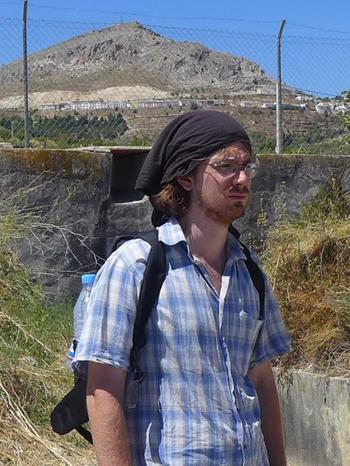Fabian Becker M.Sc.

Landscape Archaeology and Architecture (LAA)
Physical Geography
2015
Praktikum in der Sektion 5.2: "Klimadynamik und Landschaftsentwicklung" des Geoforschungszentrum in Potsdam (µ-RFA-Labor)
2013 – 2015
Studium der Geographie mit Schwerpunkt Terrestrische System an der Freien Universität Berlin; Masterarbeit zur Diskussion der Anwendbarkeit eines Erosionsmodells in den Tropen anhand eines Einzugsgebiets auf dem Südlichen Kamerunplateau
2012 – 2015
Studentische Hilfskraft in Integrated-Watershed-Management-Projekten im Bereich Physische Geographie an der Freien Universität Berlin
2008 – 2013
Studium der Geographischen Wissenschaften an der Freien Universität Berlin; Bachelorarbeit zum Einschluss der Weidenutzung auf die Landschaft in einem kirgisischen Hochgebirgstal
Iron mining and smelting in the Tyrrhenian Sea
The Topoi dissertation project A-5-4-2 constitutes the physical-geographical part of the interdisciplinary research project (A-5-4) Iron mining and smelting in the (northern) Tyrrhenian Sea. The dissertation focuses on a landscape-archaeological perspective on human–environment interactions on Elba Island (Tyrrhenian Sea; Tuscany, Italy) during the period of pre-industrial iron smelting (5th century BCE– 1st century BCE/CE and 10th to 13th century CE).
The aim of this study is to reconstruct the major factors determining the location of Roman iron smelting sites—in contrast to medieval sites, which are located in completely different landscape compartments. In addition, the dissertation aims on reconstructing past landscapes and the environmental impact of pre-industrial iron smelting, namely the geochemical impact (“pollution”), and the morphodynamic–sedimentological impact. The latter objective is based on the assumption that the demand for fuel wood for charcoal production to run the furnaces might have caused deforestation and thus also accelerated soil erosion. In consequence—as assumed in research literature since the 18th century—smelting was no longer possible on the small island due to a lack of fuel resources.
Methodologically, the dissertation is based on the sedimentological and geochemical analysis of sediments obtained by percussion drilling in alluvial valleys and plains (aims ii and iii). For comparison, cores were taken in catchments with and without smelting—in the vicinity of former mines and in great distance. In addition, the analysis of on-site soil samples combined with the analysis of slag, ore, and geological background samples (bedrock, channel sediments, soil samples) gives further insight in the environmental impact of iron smelting on Elba (aim ii). The physical / bulk chemical parameters measured are skeletal content, grain size (laser diffraction), color (colorimetry), pH-value, electric conductivity, and magnetic susceptibility; (relative) elemental compositions of soils, sediments, and metallurgical samples are determined using portable energy-dispersive x-ray fluorescence spectroscopy (p-ED-XRF) and inductively coupled plasma optical emission spectrometry (ICP-OES). The site location factors are reconstructed by the interpretation of the coastal geomorphology/geometry and an accessibility assessment (least-cost catchments).
Results
First results from the Forcioni valley (Comune di Campo nell’Elba) show that environmental conditions are similar to the present situation since 5000 BP, when the influence of the Holocene/Versilian transgression diminished. Nevertheless, a pronounced aggregation phase coincides with the period of Roman iron smelting; in combination with the charcoal record, (at least local) deforestation during this period might be quite reasonable. The geochemical record shows a clearly recognizable sedimentary smelting signature, although the overall impact in the Forcioni valley might be low.
The forthcoming analysis of further cores and on-site samples—together with a landscape-archaeological interpretation of archaeological and physical-geographical results—might allow to better understand human–landscape interactions in the context of iron smelting on Elba Island.
This dissertation project was successfully completed within the Research Group A-5 Iron as a raw material of the Excellenc Cluster 264 Topoi.
